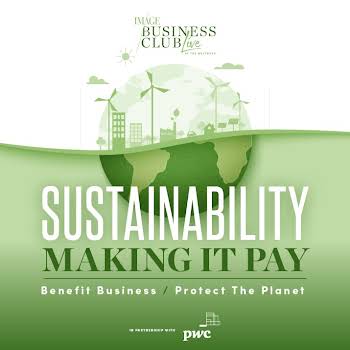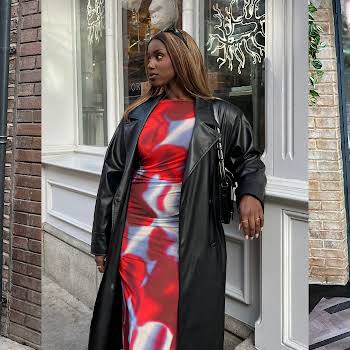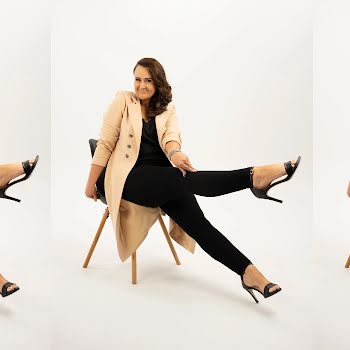By Hannah Hillyer
20th Feb 2020
20th Feb 2020
We’re focusing on paying more attention to our fast fashion habits. The best way to combat it? Take better care of what we already have.
We discuss sustainability and fashion a lot here in IMAGE as it is now impossible not to be aware of the impact fast fashion is having on the planet. With fashion being one of the biggest global polluters we know we need to make changes in how we shop going forward. Yes, shopping less will reduce our environmental footprint, but another way of combating the number of clothes that end up in landfill is to take better care of what we buy.
Think about it, there have definitely been a few times that we’ve thrown away clothes that have shrunk in the wash/gone bobbly/lost their shape, that may not have even lived in our wardrobes for very long. On average, almost 60% of clothing ends up in incinerators or landfill, only one year after being produced. This is a staggering figure, but there is a way to get a longer life span from your garments and this is by looking after the purchases you do make.
Wash less
Over-washing is one of the biggest reasons our clothes lose that new look so quickly. I used to be a big offender when it came to this, often wearing something once and throwing it straight into the wash basket. Now sometimes this is totally necessary; clothes worn on a night out spent dancing or a gym session obviously will need washing straight away. But the rest of the time, we really don’t need to wash our t-shirts, dresses, etc every single time they’ve been worn. If I do feel it needs a little freshen up I’ll often hang it on the line in the fresh air. Not only does this reduce the amount of energy spent using the washing machine but also prevents clothes from becoming bobbly and faded too quickly.
Check the label
It is so easy to fling something in the machine and feel confident you know how to wash it, I’ve been caught out with this more times than I care to admit. Every time you buy something new, check the care label for exactly how it should be washed. You’d be surprised how many things are dry clean only when you don’t expect – and vice versa.

Wash cold and short
From years working in fashion retail, I have seen my fair share of shrunken jumpers, often with the customer insisting that they washed it correctly. Many of us wash clothes too hot or on a cycle that is too long. Your average wash basket rarely contains anything particularly dirty, as our day-to-day lives rarely leave us with much more than spilt coffee or salad dressing on a pair of jeans. So we would advise you to put your machine on a 30° cold wash, on a short 30-minute cycle as this is usually enough for your day to day items.
What to hang
It’s common knowledge now that we should hang our clothes as much as possible, as it makes us more likely to wear what we can see. It’s also much better for certain garments like shirts, dresses and skirts to be hung as they keep their shape better. You’ll also spend less time ironing them if they’re not left in a crumpled, ‘folded’ heap. Invest in decent quality hangers too, say no to the cheap plastic hangers you’re offered at the checkout. Instead, buy velvet hangers in Dunnes or Primark as not only do they look nicer, but your clothes won’t slip and slide off them and become misshapen.
What to fold
There are however some garments that don’t benefit from being hung up. Jumpers and knitted dresses work better folded as the weight of them on a hanger can cause them to stretch out of shape. Also trousers – especially jeans – are quite heavy so they are better left folded.
Bobbling
If you follow the above tips and wash your clothes less, on a short, cold cycle you will avoid a lot of bobbling. With some pieces, especially knitwear, it is inevitable and is the quickest route to a jumper looking a bit sad and tired. The good thing is these can be removed, you can get super fancy and buy a Bobble Off machine that removes them, or your ordinary disposable razor does just as good a job and leaves your knit looking brand new.
Some tips for tricky fabrics
There are some fabrics that are notoriously difficult to wash, and can actually scare people from buying anything made in that material to begin with. Having the right information you’ll find they really aren’t as terrifying to wash as they may seem, and as they are better quality, natural materials they will last far longer if you do look after them.
Cashmere: generally labelled as ‘dry-clean only’ – however more and more cashmere available on the high street is machine washable. Be careful to use very gentle detergent and put on a 30° wash in your machine.
Wool: Known for shrinking, you need to wash wool on a cold 30° wash also. We would recommend drying flat where possible as wool is heavy when wet and hanging on an airer can make it stretch out of shape.
Silk: Another material that many wouldn’t even consider putting in the machine. Silk again should be washed cold with a mild detergent. Popping it into a laundry bag is also a great way to avoid the delicate fabric snagging on anything mid-wash.
Jeans: How many of us complain that our beloved black skinnies fade far too quickly? To get a longer lifespan out of your denim, wash less, and when you do need to wash them, turn inside out. This will stop the dye on the outside of your jeans from fading as quickly.
According to Greenpeace in 2015, compared to 2002, the average person buys 60% more clothing and keeps them for half as long. This statistic is frightening and illustrates the throwaway culture we now live in. So, try to invest in better quality pieces and learn how to care for them correctly, so your own clothes do not end up part of this figure.
Read more: 10 easy switches you can make to live a more sustainable life
Read more: I thought I couldn’t afford sustainable fashion but I was proven wrong
Read more: Fabrics to avoid and embrace if you want to make more sustainable fashion choices























